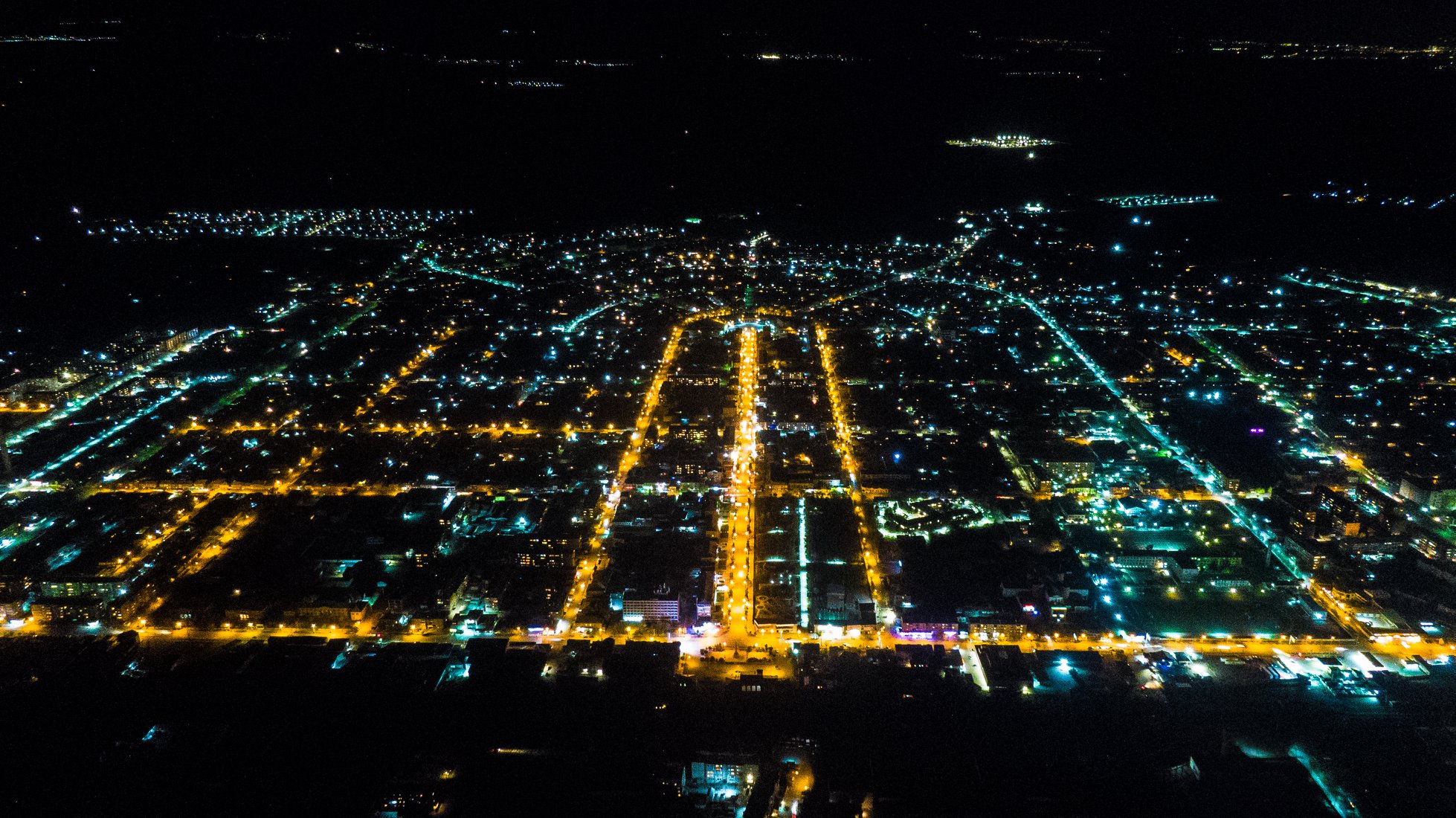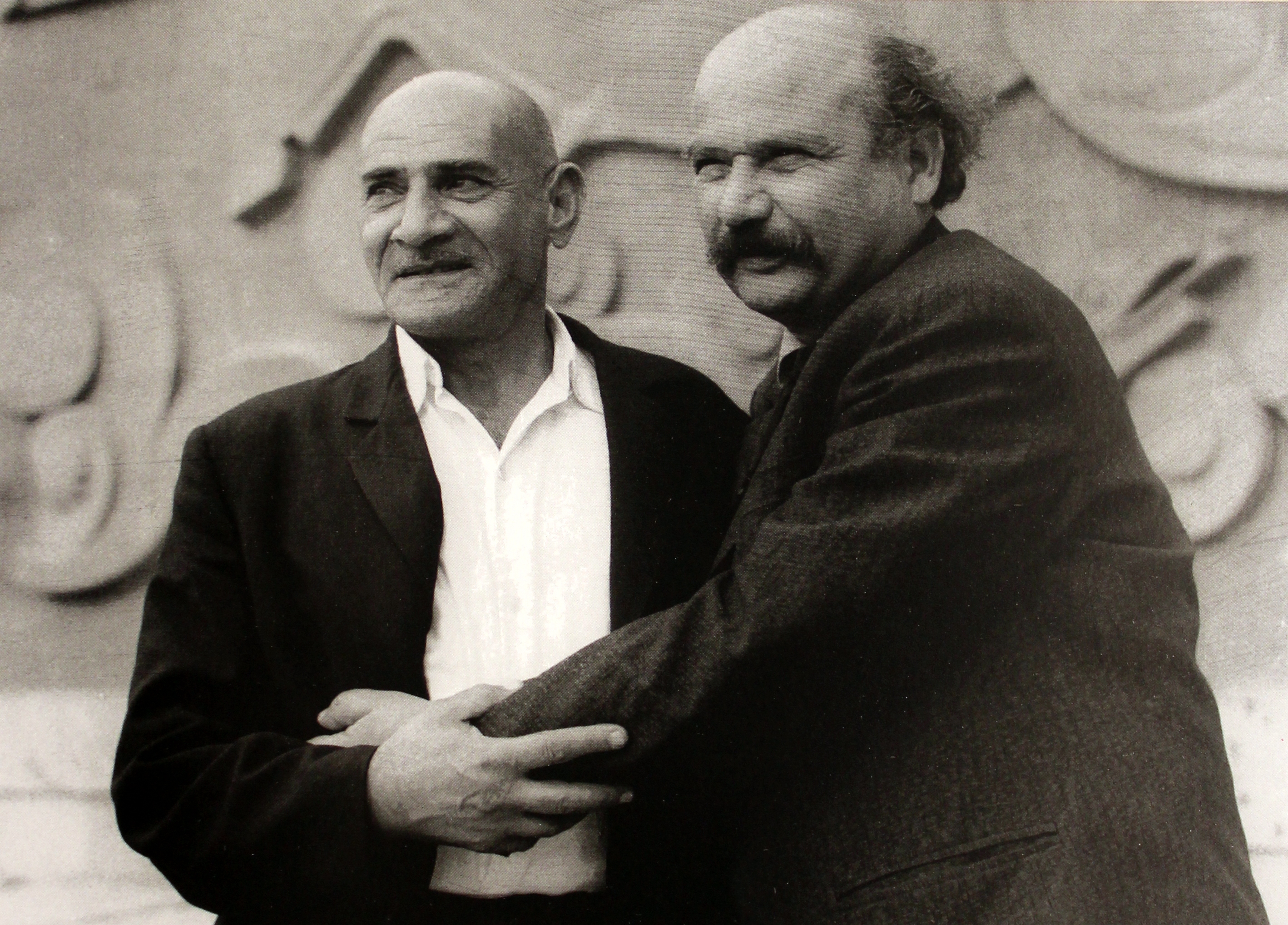|
Armenia Ethnography Museum
Officially, the Armenia Ethnography Museum and the National Liberation Movement, is a state-owned museum of Armenia located in the village of Araks, Armavir Province, within the Sardarapat Memorial complex, around 10 km southwest of the provincial centre Armavir. Designed in the shape of a medieval Armenian castle by architect Rafael Israelyan, the museum was opened in 1978. Description The museum building without windows castle impression. South (rear) front by two octagonal towers, one Aragat other, Ararat after the two-window opening is planned. The interior design is clear, the walls are smooth tuff carved arches, lined with high symbolic. Collections Collection of Armenia Museum of Ethnography and the national liberation movement contains 70 thousand sets. The materials of the Museum of the Highlands and culture of the inhabitants of the Stone Age to our days. It contains. *Hunting and primitive working tools, *ceramics, stone work, metallurgy unique designs, *p ... [...More Info...] [...Related Items...] OR: [Wikipedia] [Google] [Baidu] |
Araks, Armavir
Araks ( hy, Արաքս), is a village with 2,113 inhabitants (2001) in the western part of the Armavir Province of Armenia. It was founded as a state farm in 1940. The Battle of Sardarapat of 1918, took place near the village of Araks. In 1968, the Sardarapat Battle Memorial was erected on the site of the battle. Additionally there is the state owned Armenia Ethnography Museum Officially, the Armenia Ethnography Museum and the National Liberation Movement, is a state-owned museum of Armenia located in the village of Araks, Armavir Province, within the Sardarapat Memorial complex, around 10 km southwest of the prov .... See also * Armavir Province References Populated places in Armavir Province Populated places established in 1940 Cities and towns built in the Soviet Union Yazidi populated places in Armenia {{ArmavirAM-geo-stub ... [...More Info...] [...Related Items...] OR: [Wikipedia] [Google] [Baidu] |
Armavir Province
Armavir ( hy, Արմավիր, ), is a province (''marz'') in the western part of Armenia. Located in the Ararat plain dominated by Mount Ararat from the south and Mount Aragats from the north, the province's capital is the town of Armavir while the largest city is Vagharshapat (Etchmiadzin). The province shares a -long border with Turkey to the south and west. The province is home to the spiritual centre of the Armenian nation; the Mother See of Holy Etchmiadzin of the Armenian Apostolic Church. It is the seat of the Catholicos of All Armenians. The province is named after the ancient city of Armavir founded in 331 BC. The province is also the site of the decisive Battle of Sardarabad in 1918 that resulted in the foundation of the Republic of Armenia. The battle is seen as a crucial historical event not only by stopping the Turkish advance into the rest of Armenia but also preventing the complete destruction of the Armenian nation. The Metsamor Nuclear Power Plant is ... [...More Info...] [...Related Items...] OR: [Wikipedia] [Google] [Baidu] |
Armenia
Armenia (), , group=pron officially the Republic of Armenia,, is a landlocked country in the Armenian Highlands of Western Asia.The UNbr>classification of world regions places Armenia in Western Asia; the CIA World Factbook , , and ''Oxford Reference Online'' also place Armenia in Asia. It is a part of the Caucasus region; and is bordered by Turkey to the west, Georgia to the north, the Lachin corridor (under a Russian peacekeeping force) and Azerbaijan to the east, and Iran and the Azerbaijani exclave of Nakhchivan to the south. Yerevan is the capital, largest city and the financial center. Armenia is a unitary, multi-party, democratic nation-state with an ancient cultural heritage. The first Armenian state of Urartu was established in 860 BC, and by the 6th century BC it was replaced by the Satrapy of Armenia. The Kingdom of Armenia reached its height under Tigranes the Great in the 1st century BC and in the year 301 became the first state in the world to a ... [...More Info...] [...Related Items...] OR: [Wikipedia] [Google] [Baidu] |
Ethnographic Museum
Ethnographic museums conserve, display and contextualize items relevant to the field of ethnography, the systematic study of people and cultures. Such museums include: List by country/region Albania * Ethnographic Museum of Kavajë, * Gjirokastër Ethnographic Museum * National Ethnographic Museum (Berat) * Solomon Museum, Berat Argentina * Juan B. Ambrosetti Museum of Ethnography Azerbaijan * Gala State Historical Ethnographic Reserve, Baku * Historical-ethnographic museum of Khinalug village * Museum of Archaeology and Ethnography, Baku * National Museum of History of Azerbaijan, Baku * Nizami Ganjavi Ganja State History-Ethnography Museum Bulgaria * Ethnographic and Archeological Museum, Elhovo Brunei * Malay Technology Museum China * China Ethnic Museum, Beijing Croatia * Ethnographic Museum, Zagreb, Croatia Czech Republic * Ethnographic Museum of the National Museum, Prague Ethiopia * Ethnological Museum, Addis Ababa France * '' Musée alsacien'', Strasbo ... [...More Info...] [...Related Items...] OR: [Wikipedia] [Google] [Baidu] |
Sardarapat Memorial
Sardarapat Memorial is a memorial complex to the Battle of Sardarabad located in the village of Araks, in the Armavir Province of Armenia, 11 kilometers southwest of Armavir town. Design The memorial was designed by architect Rafael Israelyan while the sculpting is by Ara Harutyunyan, Arsham Shahinyan and Sambel Minasyan. The entrance is flanked by huge winged oxen made of red tufa. A flight of steps leads to a square from which a 26-metre-high bell tower rises. The beautiful trellised structure with its twelve bells can be seen from afar. The bells ring every year on the day of the historic victory. The monument is guarded by massive ancient style Armenian-winged lions, and is flanked by a memorial garden for Karabakh (Arstakh) martyrs. History In the early 1960s, initiatives in honor of the battle were conceived, one of the main authors of which was the First Secretary of the Communist Party of Armenia Yakov Zarobyan, who pointed to an interest in perpetuating histor ... [...More Info...] [...Related Items...] OR: [Wikipedia] [Google] [Baidu] |
Armavir, Armenia
Armavir ( hy, Արմավիր), is a town and urban municipal community located in the west of Armenia serving as the administrative centre of Armavir Province. It was founded in 1931 by the government of the Armenian Soviet Socialist Republic. As of the 2011 census, the population of the town is 29,319, declined from 46,900 reported at the 1989 census. Currently, the town has a population of 37,053 as per the 2019 official estimate. The town was known as Sardarabad before 1935, and Hoktemberyan from 1935 to 1995. Currently, Armavir is the seat of the Diocese of Armavir of the Armenian Apostolic Church. Etymology Founded in 1931 as Sardarabad, the town was known as Hoktemberyan (meaning the ''city of October'') between 1935 and 1995, named in honor of the October Revolution. In 1992, the town was named Armavir by the government of independent Armenia, after the nearby ancient city of Armavir, that was founded in the 8th century BC by King Argishti I of Urartu, and became the c ... [...More Info...] [...Related Items...] OR: [Wikipedia] [Google] [Baidu] |
Rafael Israelyan
Rafayel "Rafo" Israyelian ( hy, Ռաֆայել Իսրայելյան; 8 September 1973) was a Soviet Armenian architect. Seen as a follower of Alexander Tamanian, Israyelian designed some of Soviet Armenia's most prominent structures, including the Sardarapat Memorial, the Yerevan Wine Factory and several churches, both in Armenia and abroad, most notably St. Sargis in Yerevan and St. Vartan in New York. Life Israyelian was born in Tiflis (modern-day Tbilisi, capital of Georgia), then part of the Russian Empire, on to Armenian parents. His father, Sargis, was a philologist and folklorist born in Shusha (Shushi), Karabakh, while his mother, Mariam (née Hakhnazarian) was a teacher, originally from Nakhichevan. He attended an Armenian school in Tiflis and continued his education at the State Academy of Arts of Georgia, from which he graduated in 1928 as an architect. He later moved to Leningrad, where he studied at the Leningrad Institute of Communal Building from 1929 t ... [...More Info...] [...Related Items...] OR: [Wikipedia] [Google] [Baidu] |
Stone Age
The Stone Age was a broad prehistoric period during which stone was widely used to make tools with an edge, a point, or a percussion surface. The period lasted for roughly 3.4 million years, and ended between 4,000 BC and 2,000 BC, with the advent of metalworking. Though some simple metalworking of malleable metals, particularly the use of gold and copper for purposes of ornamentation, was known in the Stone Age, it is the melting and smelting of copper that marks the end of the Stone Age. In Western Asia, this occurred by about 3,000 BC, when bronze became widespread. The term Bronze Age is used to describe the period that followed the Stone Age, as well as to describe cultures that had developed techniques and technologies for working copper alloys (bronze: originally copper and arsenic, later copper and tin) into tools, supplanting stone in many uses. Stone Age artifacts that have been discovered include tools used by modern humans, by their predecessor species in the ... [...More Info...] [...Related Items...] OR: [Wikipedia] [Google] [Baidu] |
Museums In Armenia
;List of the museums in Armenia: *History Museum of Armenia *Mesrop Mashtots Institute of Ancient Manuscripts *National Gallery of Armenia *Yerevan History Museum * Charents Museum of Literature and Arts *Cafesjian Center for the Arts * ARF History Museum * Erebuni Museum of the Erebuni Fortress *Museum of Folk Art of Armenia *Modern Art Museum of Yerevan *Armenian Genocide Museum-Institute *Geology Museum of Gyumri *Dzitoghtsyan Museum of National Architecture * Zoological Museum-Institute * Natural History Museum of Armenia * Geological Museum after H. Karapetyan *National Museum-Institute of Architecture named after Alexander Tamanian * Sergei Parajanov Museum * Mother Armenia Military Museum * Middle East Art Museum *Armenia Ethnography Museum * Armenian Medical Museum *Service for the Protection of Historical Environment and Cultural Museum-Reserves House-museums, biography *General Andranik Museum of Patriotic Movement *House-Museum of Aram Khachaturian *House-Museum of Hovh ... [...More Info...] [...Related Items...] OR: [Wikipedia] [Google] [Baidu] |
Buildings And Structures In Armavir Province
A building, or edifice, is an enclosed structure with a roof and walls standing more or less permanently in one place, such as a house or factory (although there's also portable buildings). Buildings come in a variety of sizes, shapes, and functions, and have been adapted throughout history for a wide number of factors, from building materials available, to weather conditions, land prices, ground conditions, specific uses, prestige, and aesthetic reasons. To better understand the term ''building'' compare the list of nonbuilding structures. Buildings serve several societal needs – primarily as shelter from weather, security, living space, privacy, to store belongings, and to comfortably live and work. A building as a shelter represents a physical division of the human habitat (a place of comfort and safety) and the ''outside'' (a place that at times may be harsh and harmful). Ever since the first cave paintings, buildings have also become objects or canvasses of much artis ... [...More Info...] [...Related Items...] OR: [Wikipedia] [Google] [Baidu] |
Tourist Attractions In Armavir Province
Tourism is travel for pleasure or business; also the theory and practice of touring, the business of attracting, accommodating, and entertaining tourists, and the business of operating tours. The World Tourism Organization defines tourism more generally, in terms which go "beyond the common perception of tourism as being limited to holiday activity only", as people "travelling to and staying in places outside their usual environment for not more than one consecutive year for leisure and not less than 24 hours, business and other purposes". Tourism can be domestic (within the traveller's own country) or international, and international tourism has both incoming and outgoing implications on a country's balance of payments. Tourism numbers declined as a result of a strong economic slowdown (the late-2000s recession) between the second half of 2008 and the end of 2009, and in consequence of the outbreak of the 2009 H1N1 influenza virus, but slowly recovered until the COVID-19 p ... [...More Info...] [...Related Items...] OR: [Wikipedia] [Google] [Baidu] |







